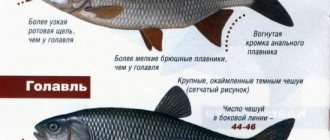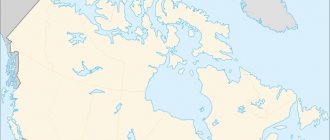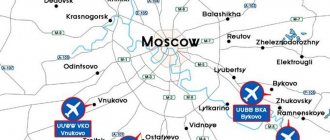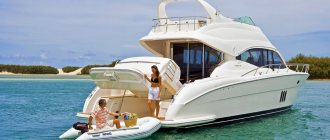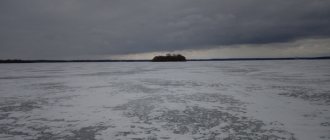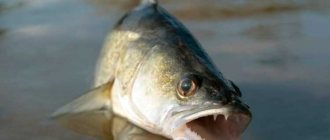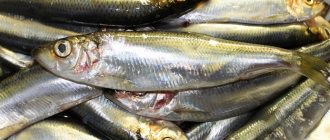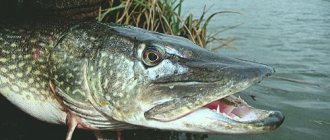Where is the sea?
The Sea of Japan is easy to find on a map of the Pacific Ocean off the eastern coast of Asia, between the Sea of Okhotsk and the Yellow Sea.
The barrier between it and the ocean are the Japanese Islands, Sakhalin and the Korean Peninsula. Water exchange with the ocean occurs through the La Perouse, Nevelskoy, Korean straits and narrow straits in the Japanese archipelago.
Rice. 1. Sea of Japan on the map.
Why are sea levels different?
Sea levels vary due to the imperfectly flat shape of the Earth and related factors. The surface of the planet consists of all kinds of landforms. Despite the plasticity of water, its volume fluctuates in certain places.
Approximate shape of the Earth
For example, satellite imagery of the earth's surface makes it possible to clearly see the unequal height of the water surface of the World Ocean. It depends on many factors, both temporary (wind waves, tides) and more permanent (ocean circulation).
Characteristics
The sea area exceeds 1 million km2, the length of the coastline is 7.6 thousand km.
The average depth is 1750 m, the maximum depth reaches 3720 m. The distribution of depths is interesting: the northern part of the sea is the deepest, the shallowest is the southwestern part, where the depth decreases to 2000-2300 m. In the northern part there is a stepped shelf, gradually plunging towards the central region. Underwater ridges extend through the axial part in the meridional direction.
The straits connecting the Sea of Japan with the ocean are shallow (no more than 100 m), which disrupts water exchange.
Recreation and tourism[ | ]
| This section is missing references to information sources. Information must be verifiable, otherwise it may be questioned and deleted. You may edit this article to include links to authoritative sources. This mark was set on October 19, 2021 . |
Since the 1990s, the coast of the Sea of Japan off the coast of Primorye has begun to be actively developed by local and visiting tourists. The impetus was factors such as the abolition or simplification of visiting the border zone, the rise in the cost of passenger transportation around the country, which made it too expensive for Far Easterners to vacation on the Black Sea coast, as well as the greatly increased number of personal vehicles, which made the Primorye coast accessible to residents of Khabarovsk and the Amur region.
Water circulation
To depths of 150-200 m, a surface layer has formed, into which warm waters of the Tsushima Current flow through the Korea Strait, flowing north along the eastern coast. In the northern part, the waters cool down and, in the form of the cold Primorsky Current, deviate from the coast of Sakhalin towards the mainland, move south and close the water “ring”.
Water temperature depends on the seasons and part of the water area: winter temperatures are 0-1.5°C in the north, +10+12°C in the south; in summer the water warms up from +15+17°C in the north, + 24+26°C in the south.
The salinity of the Sea of Japan in the western part is 33.5-33.9%o, in the eastern part it reaches 34.8%o, in the northern waters it drops to 27.5%o.
In winter, the sea is covered with ice in the northern part and bays of the western coast, reaching the island of Hokkaido in February.
Rice. 2. Vladivostok, Amur Bay in winter.
What is "sea level"?
Sea level is the position of the surface of the World Ocean, which is measured relative to a certain reference point. Depends on various factors: gravity, the moment of rotation of the Earth, tides, temperature.
Sea level rise
The most stable and accurate is the long-term average sea level, from which absolute heights and depths are measured. Different countries use optimal “sea levels” because the earth’s surface is not the same.
For example, in the countries of the former USSR, the level of the Baltic Sea, measured by the Kronstadt water gauge, is considered the starting point. In Western European countries, the Amsterdam footstock is taken as the starting point.
Climate
The water area has a moderate monsoon climate with winter winds from the Asian side and warm, humid air from the ocean in summer.
Average air temperatures in the north in winter are down to -10-15°C, in summer +15+18°C; in the southern part in winter +5+7°С, in summer +22+25°С.
The average annual precipitation increases from north to south from 300-500 mm to 2000 mm.
Typhoons are frequent during the summer months, destroying coastal infrastructure and causing casualties.
Rice. 3. Typhoon Hagibis, October 2021.
How many seas are there on Earth?
The number of seas on the planet is a controversial issue for oceanographers around the world. Each country has its own scientific point of view on this matter. For example, some experts consider the Mediterranean Sea as a single whole. Others single out the Cyprus, Ionian and other seas in it, citing the differences between the reservoirs in several ways.
Parts of the Mediterranean Sea
There are also disputes regarding whether a certain body of water is a sea or a bay.
We can certainly say that there are at least 60 seas on Earth. If we take into account the most expanded list (with bays and separate parts of larger seas), then there are 101 seas on the planet. Interesting fact : the fact that scientists cannot come to a consensus on the number of seas is not surprising. Recently, world oceanology has cast doubt on the number of oceans on Earth, highlighting the 5th - the Southern Ocean, which washes Antarctica. This decision was made in 2000, but has not yet been officially approved.
Notes[ | ]
- ↑ 12
Sea of Japan // Great Soviet Encyclopedia: [in 30 volumes] / ch. ed. A. M. Prokhorov. — 3rd ed. - M.: Soviet Encyclopedia, 1969-1978. - ↑ 1 2 3
Sea of Japan, Encyclopædia Britannica on-line (English).
www.britannica.com
. Access date: October 10, 2021. - ↑ 1 2 3
AD Dobrovolskyi and BS Zalogin Seas of USSR.
Sea of Japan. Moscow University (1982) (Russian). tapemark.narod.ru
. Access date: October 10, 2021.) - Park, S.-C;
Yoo, D.-G; Lee, C.-W; Lee, E.-I. Last glacial sea-level changes and paleogeography of the Korea (Tsushima) Strait (English) // Geo-Marine Letters: journal. - 2000. - Vol. 20, no. 2. - P. 64-71. - doi:10.1007/s003670000039. - Atlas on the oceanography of the Bering, Okhotsk and Japanese seas (unspecified)
(inaccessible link). Far Eastern Branch of the Russian Academy of Sciences. Access date: March 11, 2009. Archived November 15, 2009. - Limits of Oceans and Seas (Special Publication No. 23) : [English] : [arch. April 17, 2013] / International Hydrographic Organization. — 3rd edn. — Monte-Carlo: Imp. Monégasque, 1953. - 39 p.
- Ministry of Foreign Affairs and Trade of Korea.
Eastern Sea. Name used for two millennia (Russian) (inaccessible link). Archived March 12, 2016. - Sea of Japan (undefined)
(inaccessible link). Ministry of Foreign Affairs of Japan. Access date: January 25, 2010. Archived April 24, 2009.
Places for shopaholics
Tokyo's Ginza (also pronounced Ginza) district is arguably the pinnacle of Japan's giant retail pyramid. This fashionable area has a huge number of boutiques and first-class department stores. It is there that Tokyo's oldest department store, Wako, specializing in luxury goods, is located; the building of the Mikimoto trading house, famous for the invention of artificial pearl breeding methods; the famous department store "Mitsukoshi" and many other similar enterprises.
For buyers of various electronics, there is a specialized area in Akihabara, where you can purchase the most advanced devices at prices lower than in other parts of the world. A similar area in Osaka is called Nipponbashi. However, it is inferior to Akihabara both in terms of assortment and price level. It is better to purchase photo and video equipment in the Shinjuku area, where the largest discount stores operate.
Akihabara, Tokyo
The voltage of the Japanese electrical network (100 V) differs significantly from European standards, so when purchasing, you need to take this circumstance into account and purchase devices intended for export.
Fine examples of traditional Japanese kiyomizu-yaki and kyo-yaki pottery can be purchased in and around Kyoto. The city of Mashiko, located north of Tokyo, is famous for Mashiko-yaki ceramics. A rich assortment of antiques is on offer in Kyoto's Gion geisha district.
Tokyo's Jinboto district has many bookstores and second-hand bookshops. There you can buy books not only in Japanese, but also in most European languages. It is better to buy internationally popular manga in the Shibuya and Shinjuku areas of Tokyo, where there are a large number of specialized stores.
To purchase everyday goods, it makes sense to use the popular 24-hour konbini stores in Japan. There you can not only purchase food, ready-made meals or various manufactured goods, but also order tickets for transport or a concert, make a photocopy, pay utilities, withdraw money from an ATM, and use the free toilet.
Konbini
Tax free shops are very attractive for foreign tourists. The fact is that in such stores they refund 5% VAT upon presentation of a foreign passport. However, there are certain restrictions when purchasing. The purchase amount should not exceed 10 thousand yen, which corresponds to approximately 90 US dollars. In addition, VAT refund does not apply to alcohol, food, medicines and cosmetics.
Literature[ | ]
- Sovetov, Sergey Alexandrovich.
Sea of Japan // Encyclopedic Dictionary of Brockhaus and Efron: in 86 volumes (82 volumes and 4 additional). - St. Petersburg, 1890-1907. - Istoshin, Yuri Vladimirovich.
Sea of Japan (Russian). - M.: Geographgiz, 1959. - 80 p. — 25,000 copies. - Shamraev Yu. I., Shishkina L. A.
Oceanology (Russian) / Ed. A. V. Nekrasova, I. P. Karpova. - L.: Gidrometeoizdat, 1980. - 382 p. - Plants and animals of the Sea of Japan (Russian). - Vladivostok, 2006.
- Sokolovsky A. S. et al.
Fishes of Russian waters of the Sea of Japan (Russian). - Vladivostok, 2007. - Part 1. Crustaceans (cladocerans, thin-shelled, mysids, euphausiids) and sea spiders // Biota of Russian waters of the Sea of Japan. Volume 1 (Russian). - Vladivostok, 2004.
- Brachiopods and phoronids // Biota of Russian waters of the Sea of Japan (Russian). - Vladivostok, 2005. - T. 3.
- Caprellids (sea goats) // Biota of Russian waters of the Sea of Japan. (Russian). - Vladivostok, 2006. - T. 4.
- Free-living barnacles and facetotects // Biota of Russian waters of the Sea of Japan (Russian). - Vladivostok, 2006. - T. 5.
- Polycladid turbellaria, leeches, oligochaetes, echiura // Biota of Russian waters of the Sea of Japan (Russian). - Vladivostok, 2008. - T. 6.
- Sea of Japan: encyclopedia / author. and comp. I. S. Zonn and A. G. Kostyanoy; edited by A. N. Kosareva. - M.: International. relations, 2009. - 420, [1] p.: ill., map., portrait. — Bibliography: p. 418-420 (51 titles). — 1000 copies.
- Dobrovolsky A.D., Zalogin B.S.
Sea of Japan // Seas of the USSR (Russian). - Publishing house Moscow. University, 1982.
Pacific Ocean
(Sunrise over the Pacific Ocean from Ishigaki Island)
The Pacific Ocean is the largest and deepest body of water on the planet. Its area is 169 million square kilometers. The Pacific waters account for almost 50% of the volume of the World Ocean.
For Japan, it is the main source of raw materials for the food industry and medicine (fish, shellfish, algae). On the shelf of the islands it washes there are rich deposits of gas and oil. Most of the Japanese resorts are concentrated on its coast. A warm current, the Kuroshio, runs along the Japanese islands, which significantly softens the climate of the islands of Kyushu, Shikoku and Honshu.
Earthquakes often occur on the coasts washed by the Pacific Ocean. By the way, seismic activity under its waters is quite high: the world’s highest tsunamis are formed in the Pacific.
Source
North of Russia
The Laptev Sea is very cold, but apparently in the past the climate was much warmer.
Many mammoth bones have been discovered on the islands. Thanks to permafrost, some animals were preserved frozen - their skin was covered with wool; scientists were even able to determine what the animals ate by the contents of their stomachs. The second largest “small sea” is the White Sea, its area is 90 thousand square kilometers. The White Sea is entirely within Russia. The Scandinavian name is "Gandvik", but this name was supplanted by the Russian name "White", the Russian version was first mapped by the Dutch cartographer Peter Placius.
The Chukchi Sea has very rich vegetation, its abundance can be compared with the flora of tropical seas. There are very few bottom-dwelling animals here, but there are still sponges, starfish and small crabs.
The largest sea in Russia is the Bering Sea, it is quite deep, the average depth is 1640 meters. In the Russian Federation, this sea is the northernmost, so it is very cold, the summer water temperature averages 10 degrees.
About ten species of sharks can be found in the Sea of Japan. Some of them are harmless, but there are also white sharks and mako sharks that can attack humans. There is a rich flora and fauna here, which is why there are many sharks here, which can feed themselves here without much difficulty. Here you can meet dolphins, killer whales, and gray whales. This sea is also the windiest - strong winds blow here throughout the year, creating large waves. Brown algae - kelp and seaweed - are harvested in the Sea of Japan.
The Laptev Sea is covered with ice all year round; the ice crust partially melts only in August.
